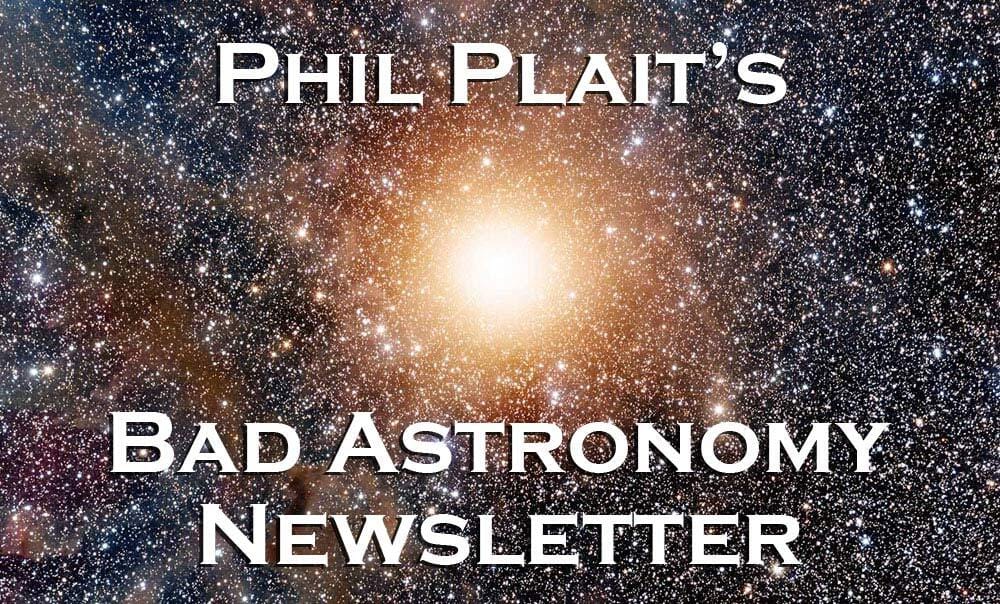- Bad Astronomy Newsletter
- Posts
- Incredible JWST image of NGC 1514’s double ringed mystery
Incredible JWST image of NGC 1514’s double ringed mystery
It’s bizarre, and we still don’t understand this dusty structure
April 15, 2025 Issue #865
NGC 1514 is running rings around us
Astronomers still don’t know what is sculpting this nebulaTitle 1
Finally! I’ve been waiting months for the paper on NGC 1514 to come out. This nebula has bugged me for years, and when I saw that JWST had observed it I knew that at last I’d get some answers to this object’s truly bizarre double-ring shape and structure, and especially their origin.
<rubs hand together>
<clicks on paper>
<reads paper>
<gets to conclusion>

From the NGC 1514 paper. Credit: Ressler et al. 2025
Dammit.
OK, but still, this object is tremendously cool, and even if it’s still a mystery, it’s worth looking at.
NGC 1514 is a planetary nebula, a gas cloud blown off by a star as it dies. When a star runs out of fuel in its core it expands into a red giant and blows off its outer layers. Eventually enough material is ejected that the star’s core is exposed to space, and we call it a white dwarf. These are tiny (planet-sized) and extremely hot, but are very faint because they’re small.
Nevertheless, the gas surrounding them is close enough to get excited by the ultraviolet light from the white dwarf, causing the gas to glow. You’ve likely seen tons of planetary nebula images from Hubble and JWST, because they’re all pretty spectacular.
These objects come in many shapes and sizes. Explaining the different shapes isn’t always easy, but sometimes it’s harder than others.
Like, for example, with the above-mentioned NGC 1514, which is… well, see for yourself:

NGC 1514, the Transparent Tuna Can Nebula (not really, I made that up). Credit: NASA, ESA, CSA, STScI, Michael Ressler (NASA-JPL), Dave Jones (IAC)
Yeah, what? Like I said, bizarre.
This shot was taken by JWST using its MIRI (Mid Infrared Instrument) camera, so we’re seeing it in infrared light with much longer wavelengths than the eye can see. What’s displayed as blue is actually a wavelength of 7.7 microns, yellow is 12 microns, and red is 25.5.
You can see a clumpy red cloud in the center, and the bluish tint of the star in the center, but of course it’s those rings that grab the attention. What are they? Turns out, we’re not sure.
They sure grabbed my attention when, years ago, NASA released an image of the nebula taken by the Wide-field Infrared Survey Explorer, or WISE:

WISE image of NGC 1514. Credit: NASA/JPL-Caltech/UCLA
This is a well-known nebula and popular with amateur astronomers, but in visible light there’s not even a hint of the rings. They can only be seen in the infrared. So what are they?
They’re rings. I mean, seriously, they are rings of dusty material, about 1.3 light years across each, and about 0.6 light-years separating them. The nebula is about 1,500 light-years from Earth.
When I say dust I mean tiny grains of material expelled by red giants, usually consisting of silica (like rock) or carbon (like soot). Both are common, though, oddly, no emission from carbon is seen in the JWST images. They must therefore be silicaceous.

Subscribe to Premium to read the rest.
Become a paying subscriber of Premium to get access to this post and other subscriber-only content.
Already a paying subscriber? Sign In.
A subscription gets you:
- • Three (3!) issues per week, not just one
- • Full access to the BAN archives
- • Leave comment on articles (ask questions, talk to other subscribers, etc.)


Reply